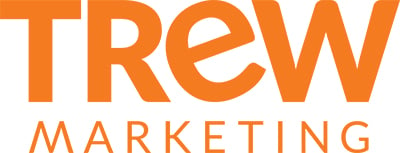3 min read
From Sales to Success: How Surveying Your Team Can Drive Marketing ROI
 Hannah Schulze
:
6/21/22 7:05 AM
Hannah Schulze
:
6/21/22 7:05 AM
Your sales team is a valuable resource when it comes to marketing planning, content planning, and voice of the customer throughout the year. Especially for companies with many avenues for content creation (and lots of it), it can be difficult to identify what types of collateral sales needs more of, what collateral needs updating, and what tools the sales team finds most useful.

Along with monthly or quarterly sales and marketing alignment meetings, surveying can be a quick and illuminating activity for marketing teams looking to understand what their sales partners really need.
5 Best Practices for Surveying Your Sales Team
Keep it short
There’s no magic number, but in our experience, 10 questions works well for an internal survey. Your colleagues are as busy as you are, so don’t get greedy with the number of questions you expect them to answer. Participant fatigue can really impact your response rate!
Establishing your goals before you start drafting a survey helps control length.
- What information do you really need from the sales force?
- What are you going to use it for?
- Are you looking to prioritize major projects?
- Better understand how to allocate your team’s time?
- Pinpoint content gaps?
Be thoughtful about survey tool selection
There are many survey tools to choose from—each with their own strengths, weaknesses, and costs. If your question types and logic are simple and you commit to a shorter survey length, most survey platforms will be able to accommodate your needs. Start by determining if your company has a preferred platform or existing accounts. Don’t try and reinvent the wheel unless you’d like to make the case for a new platform.
Depending on our needs and use case, TREW Marketing has used HubSpot Forms, Google Forms, and SurveyMonkey. At this point, we’re using Survicate, and thus far, it’s gotten positive reviews from the team for its clean interface and built-in analysis tools.

Survicate interface featuring a TREW survey that goes out to Content Writing, Engineered participants
at the end of the 6-week course.
Make it easy and/or incentivize
Give participants a sense of how long your survey will take (e.g., 5 to 10 minutes) and how much time they’ll have to complete it (e.g., 2 weeks). Plan for a couple of email outreaches to remind the sales force that you’re looking for feedback, and consider partnering with a sales lead or influential team member to encourage participation. If you can incentivize (e.g., raffle entry), don’t be afraid to do so.
To create buy-in, be clear about why you’re looking for feedback and what you’re planning to use it for. If the sales force understands their level of influence, they may be more likely to participate. Follow through is an important part of the equation, but we’ll get to that later.
Share Results
As partners, your sales team will be interested in hearing about the results of your research. Set aside time to analyze results and offer a project summary that includes project goals, question text, results, and interpretation. That way, they have an opportunity to hear more about the project they contributed to and see what their peers have to say. Better yet, set up a short meeting or lunch-and-learn to interpret results and establish action items together, as a team. Collaboration lends itself to richer insights.
Show you’re listening
If your team doesn’t have the bandwidth to follow through on integrating survey feedback into your marketing plan, surveying your sales force might not be the best idea right now. Soliciting information from your sales force and failing to address any of their needs has no trust-building effect. While feedback might not restructure an entire marketing plan (unless you collect results in time for your yearly marketing planning meetings), you should be able to show how and where you’re addressing the feedback you received. This goes back to goals and objectives.
“It’s important for us to know how the content we’re creating is being used, said Lance Looper, Technical Marketing Manager at Silicon Labs. “Of particular concern for us is knowing that we're covering the topics that our audiences care about… Gathering insights that we can use to focus our efforts on the right content types and the right topics is an investment that we'll continue to make.”
Going into an internal research project with burning questions in mind encourages action on the back end and allows you to demonstrate the value of your research. In Looper’s case, survey results indicated key takeaways that might be useful for other teams too.
For more information on marketing planning and collaborating with sales, check out our Sales Enablement Services.
TREW is a marketing agency dedicated to reaching engineering and technical audiences through a range of marketing initiatives. Contact us today to learn more about the services we offer.
SUBSCRIBE TO OUR BLOG FOR THE LATEST UPDATES
Hannah Schulze
 Hannah holds a B.S. in Biomedical Engineering from Wentworth Institute of Technology and a M.A. in Technical Communication from Texas Tech University. Before joining the TREW Crew as a full-time Content Specialist, she worked in healthcare consumer insights and science writing.
Hannah holds a B.S. in Biomedical Engineering from Wentworth Institute of Technology and a M.A. in Technical Communication from Texas Tech University. Before joining the TREW Crew as a full-time Content Specialist, she worked in healthcare consumer insights and science writing.
About TREW Marketing
TREW Marketing is a strategy-first content marketing agency serving B2B companies that target highly technical buyers. With deep experience in the design, embedded, measurement and automation, and software industries, TREW Marketing provides branding, marketing strategy, content development, and digital marketing services to help customers efficiently and effectively achieve business goals.



